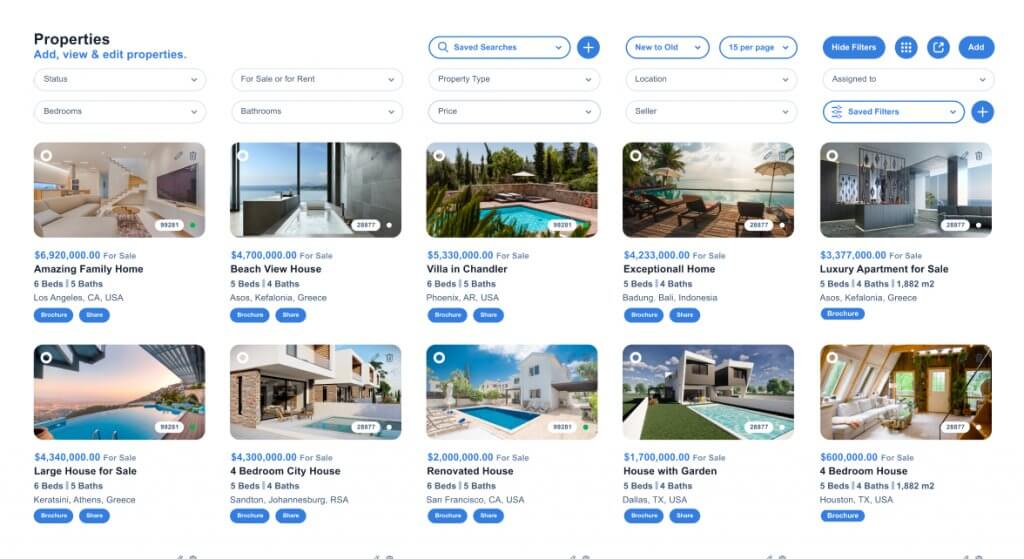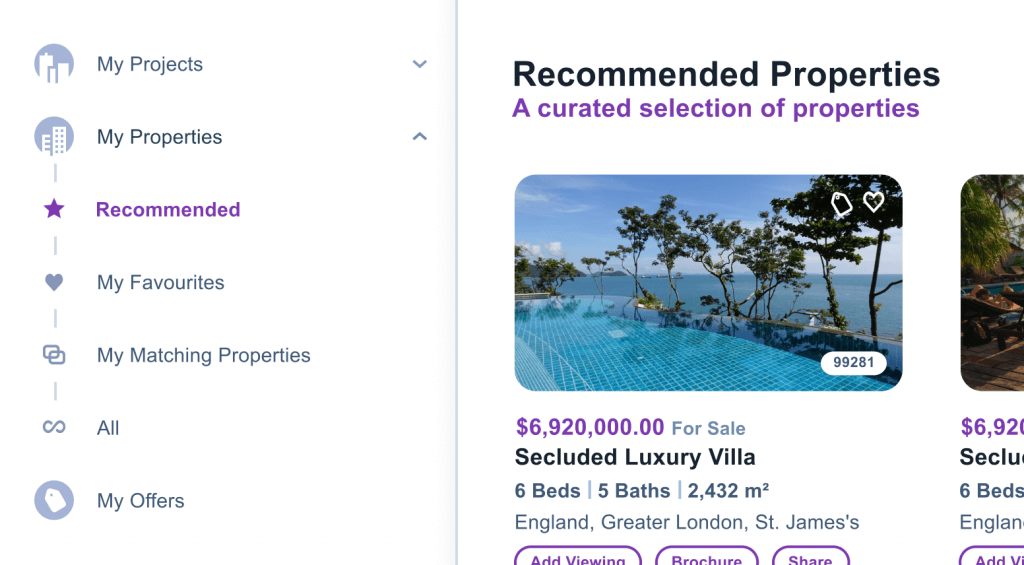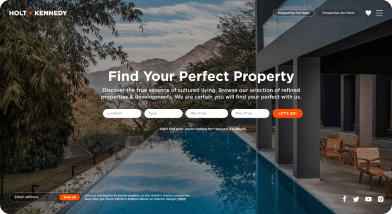Real estate video marketing is a powerful tool to help you grow your real estate business. Animoto tells us that real estate listings with video get an astonishing 403% more inquiries. Some research also predicts that by 2022 video will become the most dominant digital marketing content channel, accounting for 82% of all online traffic. The takeaway? Video marketing should already be an integral part of your real estate digital marketing strategy. How to do this is what we’ll be discussing in today’s blog.
So, what is Real Estate Video Marketing exactly?
To answer this question, you first need to understand what video marketing is. It’s a formidable marketing method that uses video to promote a product or service, increase engagement, educate consumers and reach your target audience. And real estate video marketing is exactly what it sounds. It’s the use of video content to market your property listings; and to reach, educate and engage prospective buyers and existing customers.
There are several types of videos that you can create. We have 6 ideas to get your started.
Profile videos for real estate
A profile video gives you the opportunity to introduce your brand to the audience you’re targeting. It communicates who you are, what services you provide, and the value that you can offer. It also creates a first impression of your business in just a couple of minutes, so it needs to be high quality, emotive and be relevant to your target audience.
A good profile video can make or break your conversion levels and help to bring brand awareness to new heights.
Real Estate Video testimonials
Customer testimonials have the highest effectiveness rating for content marketing at 89% (Social Fresh). Video testimonials add an extra element of persuasiveness and personality, making them the way to go when you need to convince your audience to act.
The key goal of testimonial videos is to make your viewers trust your brand.
By having existing customers share their stories and experiences with your business, you are building that trust and credibility. This is vital for any enterprise operating in any industry, but especially for Real Estate. When people are trusting you to help them choose their future home, they need to feel secure and protected. Testimonial videos can help you provide that sentiment.
Make sure that your videos feel real, are not staged and are human. Film your clients in a comfortable setting, where they can relax. Don’t use scripts and allow them to speak from the heart. The rawer your video is, the more credible it feels and the higher engagement it will likely get.
Videos of your property listings
As Animoto has already mentioned, real estate listings with video get 403% more inquiries! Chances are, you’ve probably got high-quality photographs of your property listings. Why note turn these into a video to attract homebuyers and help your sell your real estate? Take it a step further and create simple videos that showcase specific neighbourhoods and the amenities that they offer. Include information about schools, shops, transportation, culture, activities, parks, weather, etc. Consider video house tours to showcase your properties virtually and help people experience the feeling of entering a property. Not only will you reach a wider audience, but people calling with an enquiry after seeing the video indicates a higher interest in the property and that it satisfies their requirements, increasing your chances of closing a deal.
Still not convinced? Let’s look at some more stats:
- 85% of buyers and sellers want to work with an agent that uses real estate videos for marketing.
- 86% of homebuyers use video to research a particular community.
- 70% of homebuyers watch video house tours.
How-to or educational real estate videos
According to Google, “How-to” videos earn the most attention of any content category on YouTube, even more than music or gaming. 80% of Gen Z teens find that YouTube helped them become more knowledgeable, while 1 in 3 baby boomers use it to find out about a product or a service. This means that across all generations, video is mostly used as a learning tool.
But what does this mean for real estate? It means, that your company’s target audience, no matter how varied, is hungry to learn from you.
Homebuyers are looking for companies with expertise to help them. To answer the questions they’re asking. This can be achieved in multiple ways. “Create short, educational videos on common real estate topics and questions. These short, video snippets let viewers learn at their own pace and extend your reach to a much broader audience through social media. And you’ll build a reputation as an exceptionally helpful, knowledgeable real estate resource.” (Paradym)
Real estate animated videos
Animated videos are one of the easier options for companies to get into video marketing. They are usually designed in-house, simple to make and usually cost-effective. They are also a great way to simplify messages and showcase difficult concepts in a straightforward and engaging way.
With a few simple illustrations and text, you are guaranteed that your audience will receive your message even if they play the video with the sound off.
These types of visuals are great for sharing on social media channels and can help bring more traffic to your profiles and your website.
Live videos for real estate
Continuing the trend of the importance of human touch in marketing, live videos have become more and more popular in the past few years. Now almost all of the top social media platforms offer lived video tools for companies and users to explore.
Facebook users are 4x more likely to watch live streams than recorded videos. (Sprout Social)
Live videos allow your viewers to feel that they are having a direct conversation or interacting with you in real-time. They are more personalised and authentic than anything you can prerecord. This is probably why viewers spend up to 8.1x longer with live video than with video-on-demand.
Real estate video creation tips
As you start the process of creating your first real estate video, keep these Animoto tips and other best practices in mind:
Title and description
Title and description are how people will find you when conducting a search online. So, be sure to incorporate the keywords they’ll search for when looking for the information that your video offers.
Branding
Include your company logo, branding colours and contact information so that potential buyers or sellers will know who you are and how to reach you. This applies to all types of videos.
Subtitles
According to DigiDay, 85% of videos on Facebook are watched without sound. Be sure to caption all your videos. Don’t forget that not everybody watches a video with sound. This means you need to provide descriptive text and subtitles so that viewers will understand your video without having to switch the sound on. Incorporate high resolution images or easy to read infographics.
Other important tips:
Message
The average attention span of a person is only 8.5 seconds. This makes it important to hook your viewers almost immediately. Appeal to their curiosity, communicate what your video is about immediately, and make them want to watch until the end. The clearer your intention is from the beginning, the higher the chance that your goals will be met.
Search engine optimisation (SEO)
Just like you optimise your written content for SEO, you need to optimise your videos. The concept is very similar. Start with incorporating keywords that you want to rank for to your tags, descriptions and titles. Try to keep your video’s title below 66 characters and make sure you add your key keyword to it. Also, focus on your video’s length. The optimal video length is 2 minutes, however, up to 4 minutes is also a good length. Anything over 4 minutes is going to give you much lower results and you will simply lose your viewers’ attention. So, keep your video content short and informative.
Conclusion
Overall real estate video marketing should be about pushing boundaries and finding new unique ways to communicate with your audience. No matter what type of video you create, be intentional. Know what your audience wants to see and cater to their needs. Do this in a way that’s engaging, authentic and informative.




